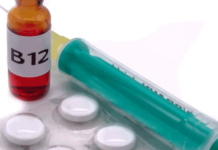Antibiotics have revolutionized modern medicine, transforming how we treat bacterial infections and saving millions of lives each year. These powerful medications combat harmful bacteria with remarkable efficiency, tackling everything from strep throat to life-threatening pneumonia. However, there’s a catch—antibiotics don’t work against viruses, and misuse has led to a growing global crisis: antibiotic resistance. In this in-depth guide, we’ll explore what antibiotics are, how they function, their advantages, potential hazards, and best practices for safe use. Plus, we’ll dive into natural alternatives and the future of fighting bacterial infections.
What Are Antibiotics?
Antibiotics are specialized medications designed to either kill bacteria or stop their growth. They’re a cornerstone of healthcare, treating bacterial infections that once claimed countless lives. Available in various forms—pills, capsules, creams, ointments, and injections—antibiotics target conditions like urinary tract infections (UTIs), skin infections, and respiratory illnesses caused by bacteria.
The discovery of antibiotics, starting with penicillin in 1928 by Alexander Fleming, marked a turning point in medical history. Today, they remain essential tools for doctors worldwide, offering rapid relief and preventing complications from bacterial diseases.
Key Takeaway: Antibiotics are powerful drugs that fight bacteria—not viruses—making them vital for specific infections.
How Do Antibiotics Work?
Antibiotics attack bacteria in two primary ways, depending on their type:
1. Bactericidal Antibiotics
These antibiotics kill bacteria outright by targeting critical components, such as their cell walls or metabolic processes. For example:
-
Penicillin: Disrupts bacterial cell walls, causing them to burst.
-
Cephalosporins: Similar to penicillin, they’re effective against a broad range of bacteria.
2. Bacteriostatic Antibiotics
Rather than killing bacteria directly, these drugs slow their reproduction, allowing your immune system to take over. Examples include:
-
Tetracyclines: Inhibit protein synthesis in bacteria.
-
Macrolides: Stop bacterial growth, often used for respiratory infections.
By disrupting bacterial survival or multiplication, antibiotics give your body the upper hand in fighting infections.
Why It Matters: Understanding how antibiotics work helps explain why they’re ineffective against viral infections like the flu or common cold.
Common Uses of Antibiotics
Doctors prescribe antibiotics for a variety of bacterial infections. Here are some of the most frequent applications:
-
Respiratory Infections: Pneumonia, bacterial bronchitis, and sinusitis.
-
Urinary Tract Infections (UTIs): Painful bladder or kidney infections caused by bacteria like E. coli.
-
Skin Infections: Cellulitis, abscesses, or infected wounds.
-
Ear Infections: Common in children, such as bacterial otitis media.
-
Sexually Transmitted Infections (STIs): Gonorrhea and chlamydia respond well to antibiotics.
-
Gastrointestinal Infections: Helicobacter pylori, linked to stomach ulcers, is a prime target.
Antibiotics are also used preventively, such as during surgeries to reduce the risk of postoperative infections.
Pro Tip: Always consult a healthcare provider to confirm whether your condition requires antibiotics.
The Advantages of Antibiotics
When used correctly, antibiotics offer incredible benefits that have shaped modern healthcare:
-
Life-Saving Power: Before antibiotics, minor infections like a cut could lead to sepsis and death. Today, they save an estimated 200,000 lives annually in the U.S. alone.
-
Speedy Recovery: Symptoms like fever or pain often subside quickly with treatment.
-
Prevention of Complications: Early intervention stops infections from spreading to vital organs.
-
Surgical Safety: Antibiotics reduce infection risks during procedures like appendectomies or C-sections.
-
Epidemic Control: They curb outbreaks of diseases like bacterial meningitis or tuberculosis.
These advantages highlight why antibiotics remain a pillar of medicine—when used responsibly.
The Risks and Side Effects of Antibiotics
Despite their benefits, antibiotics aren’t without downsides. Here’s what you need to know:
1. Antibiotic Resistance
Overuse or improper use allows bacteria to adapt, rendering antibiotics less effective. This global health threat makes infections harder to treat and increases mortality rates.
2. Allergic Reactions
Some people experience mild rashes, while others face severe reactions like anaphylaxis—a life-threatening emergency.
3. Digestive Issues
Nausea, diarrhea, and stomach cramps are common side effects as antibiotics disrupt gut bacteria.
4. Immune System Impact
Killing beneficial bacteria can weaken your natural defenses over time.
5. Yeast Infections
By upsetting the body’s microbial balance, antibiotics can trigger fungal overgrowth, especially in women.
Heads-Up: Misusing antibiotics amplifies these risks, so always follow medical advice.
How to Use Antibiotics Safely
Maximizing the benefits of antibiotics while minimizing risks requires smart practices. Here’s how:
-
Follow Doctor’s Orders: Take the exact dose at the right times—don’t skip or stop early.
-
Avoid Self-Medication: Only use antibiotics prescribed by a healthcare professional.
-
Complete the Course: Stopping treatment prematurely can leave bacteria alive, fostering resistance.
-
No Antibiotics for Viruses: They won’t help colds, flu, or COVID-19—save them for bacterial infections.
-
Check for Allergies: Inform your doctor of past reactions to avoid complications.
-
Proper Storage: Keep antibiotics in a cool, dry place, out of reach of kids.
Quick Fact: Finishing your prescribed course reduces the chance of resistant bacteria surviving.
The Growing Threat of Antibiotic Resistance
Antibiotic resistance is one of the World Health Organization’s top 10 global health threats. When bacteria evolve to withstand antibiotics, infections become harder—and sometimes impossible—to treat. Here’s what drives this crisis:
-
Overprescription: Doctors sometimes prescribe antibiotics unnecessarily.
-
Incomplete Doses: Not finishing a course leaves resilient bacteria behind.
-
Viral Misuse: Taking antibiotics for colds or flu fuels resistance.
-
Agricultural Use: Antibiotics in livestock contribute to resistant strains.
The consequences are dire: resistant infections kill over 700,000 people yearly, a number projected to rise to 10 million by 2050 without action.
What You Can Do: Use antibiotics only when necessary and advocate for responsible use.
Natural Alternatives to Antibiotics
For mild infections or immune support, natural remedies can complement—or sometimes replace—antibiotics. Here are some evidence-backed options:
-
Garlic: Contains allicin, a compound with antibacterial properties.
-
Honey: Used for centuries, it fights bacteria and soothes wounds.
-
Ginger: Reduces inflammation and has antimicrobial effects.
-
Echinacea: Boosts immunity and may shorten infection duration.
-
Probiotics: Restore healthy gut bacteria disrupted by antibiotics.
While these alternatives aren’t substitutes for severe infections, they can support your body’s defenses. Always consult a doctor before relying solely on natural remedies.
Fun Fact: Manuka honey is especially potent against bacteria like MRSA.
The Future of Antibiotics: Innovations on the Horizon
With antibiotic resistance rising, scientists are racing to develop solutions. Here’s what’s in store:
1. New Antibiotics
Researchers are creating novel drugs to outsmart resistant bacteria, though development is slow and costly.
2. Bacteriophage Therapy
Viruses that attack bacteria (phages) could become a targeted alternative to antibiotics.
3. Gene Editing
CRISPR technology might disable resistance genes in bacteria, restoring antibiotic effectiveness.
4. Alternative Medicine
Herbal treatments and immune-boosting therapies are gaining attention as complementary options.
These innovations offer hope, but they’ll take time to reach widespread use. Until then, responsible antibiotic use remains critical.
Conclusion: Antibiotics—A Double-Edged Sword
Antibiotics are a triumph of modern medicine, offering life-saving treatment for bacterial infections. Yet, their power comes with responsibility. Misuse fuels antibiotic resistance, threatens global health, and underscores the need for careful stewardship. By following medical guidance, finishing prescriptions, and exploring natural alternatives when appropriate, you can help preserve antibiotics for future generations.
Have questions about antibiotics or resistance? Consult your doctor—and share this guide to spread awareness!













